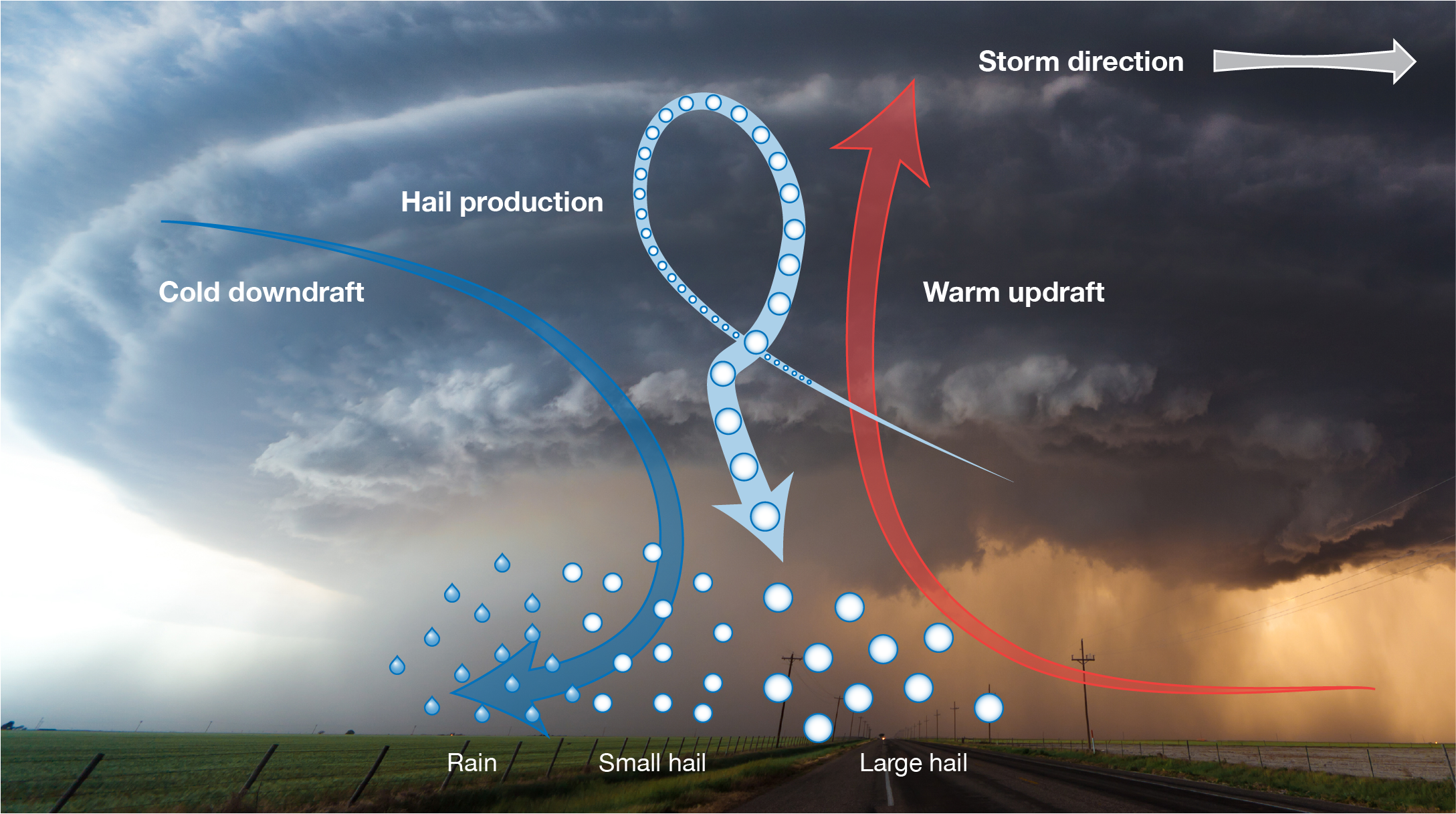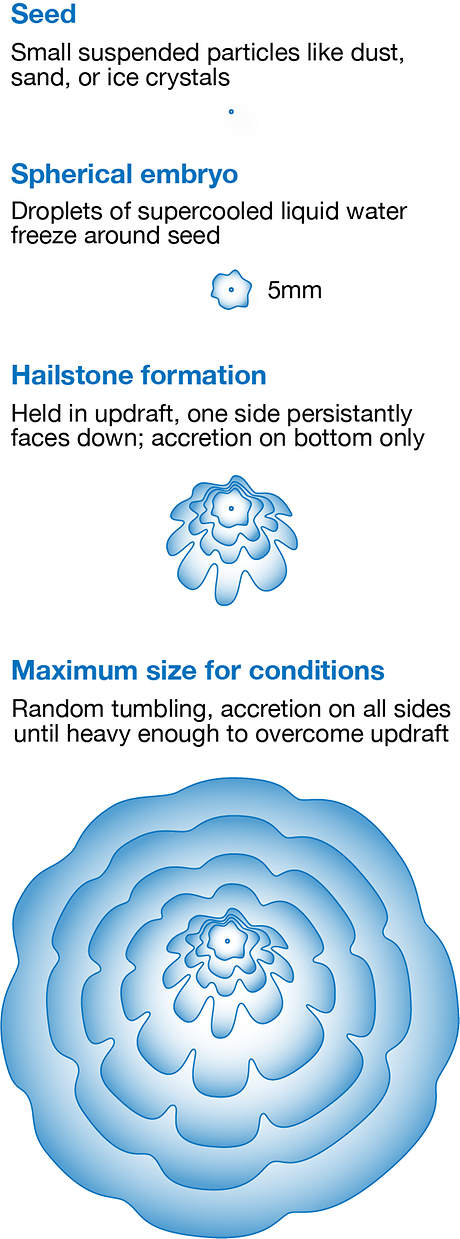The National Oceanic and Atmospheric Administration (NOAA) estimates that in 2024 alone, the United States experienced 27 weather- and climate-related billion-dollar disaster events, with losses totaling $182.7 billion. Severe convective storms—a category that includes hazards such as high wind, extreme hail, and tornadoes—were responsible for 17 of those 27 events, resulting in an estimated $46.8 billion in combined damages.
Given the increasing frequency and severity of damaging convective storm events, it is important for clean energy project stakeholders to understand not only how hail forms but also how climate scientists predict hailstorms to change in the coming decades.
Hailstone formation and growth
The World Meteorological Organization defines a hailstone as any particle of ice larger than 5 mm in diameter generated within a convective thunderstorm. Generally, hail-producing convective storms develop when some mechanism—perhaps a large-scale meteorological phenomenon such as a weather front or even a physical geographic feature like a mountain range—forces large volumes of air to move vertically upward into an unstable layer of the atmosphere.
In the meteorological context, unstable refers to a state where the relative temperature of a pocket of air—typically referred to as an air parcel—is warmer and thus less dense than its surroundings. This concept of atmospheric instability is fundamental to severe thunderstorm generation, as it helps drive the hail generation process by supplying the necessary moisture content to the upper levels of the troposphere.
When these unstable conditions occur, the warm air parcel ascends on its own without the need for additional forcing from large-scale features. Conceptually, the air pocket behaves much like a hot-air balloon, which will rise freely after a propane burner heats the interior air and increases its buoyancy.
As parcels of warm air ascend, water vapor cools and condenses into the small water droplets that contribute to cloud formation. Even after the parcel reaches a subfreezing layer characterized by temperatures in the 0°C to -20°C range, some water droplets exist in supercooled liquid form, a key ingredient for hailstone creation and growth.



